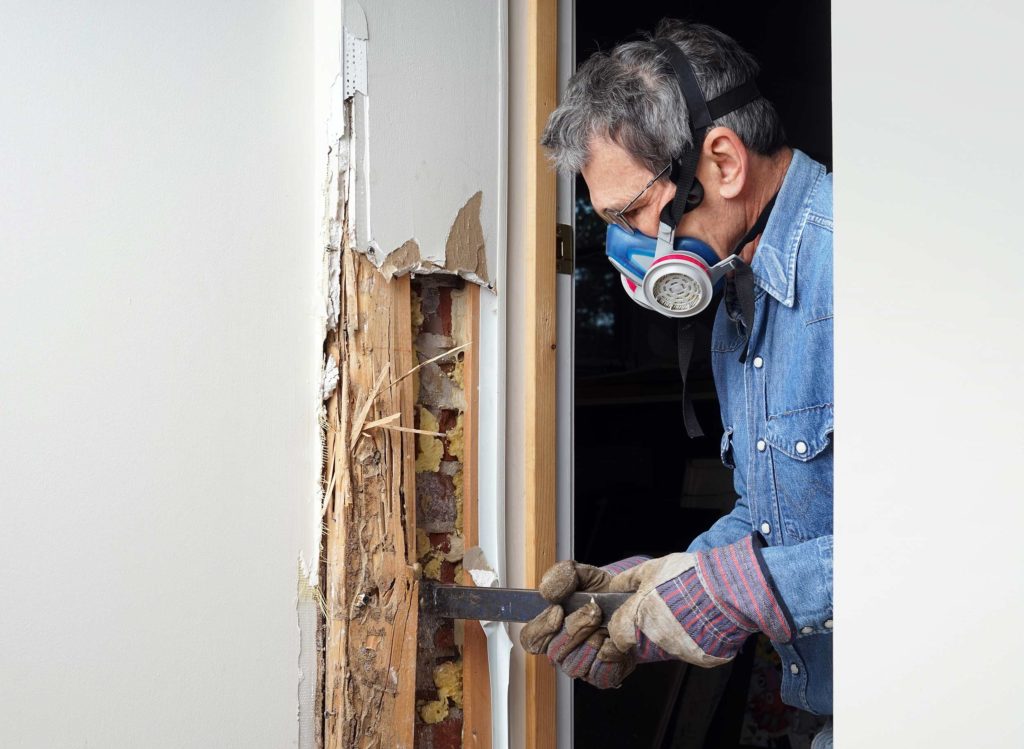
Termites are an invasive species that can quickly destroy your cabin. If you want to prevent termite infestation in your cabin, there are some steps you need to take. This blog post will go over the preventative measures that you should be taking against termites from building practices to ongoing inspections for signs of termites. We’ll show you how to prevent termites from damaging your cabin and how to treat termite infestations in your cabin if discovered.
Cabins are at greater risk of termite damage than a traditional home because termites are attracted to wood, a cabin’s most prominent building material. Additionally, cabins are more susceptible to a termite infestation because cabins are often found in more remote, wooded locations where termite populations are high. However, termite infestations can be prevented with proper building practices and general maintenance. If termite damage is found early, termites can be treated affordably. Here are the best ways to prevent termites from ruining your cabin.
Building Practices
The best way to prevent a termite infestation is to start your defense prior to construction and continue using best preventive measures throughout the construction of your cabin. These are the most important things you should consider:
Soil Pre-Treatment
Prior to pouring a foundation or hammering a nail, it’s recommended that the soil is pretreated with a termiticide. A termiticides is a type of pesticide designed specifically to control, suppress, or prevent termites around your building footprint.
The soil should be saturated with the pre-treatment to prevent an early infestation of termites through access points during construction. Vulnerabilities during the construction of your cabin will include plumbing openings, crawl spaces, and cracks in the concrete slab, among other places.
Perimeter Defense
It is recommended that the perimeter of the home also be pretreated, but you might also consider setting up bait stations to attract termites to the termiticide. When the bait is taken, the termite can take it back to its colony to poison the entire colony.
Bait stations offer the benefit of reducing the amount of chemicals put into the ground. In doing so, it also limits the potential for poisoning other unintended species underground.
Bait stations are a bit more expensive and require semi-regular attention. When the bait is taken, it needs to be replaced, so ongoing maintenance is required.
Use a Physical Termite Barrier
Stainless steel physical barriers are effective at keeping termites away from your home, but they aren’t cost-effective to use underneath the entirety of the house, so they’re used at critical entry points like plumbing holes, weep holes, soffits, and ridge vents. Termites can get into incredibly small places, so the stainless steel screen must have openings of less than a half millimeter to effectively shield off termites.
Build On A Solid Slab Foundation
Concrete slab foundations make it difficult for termites to get to your home. Building your home on a crawlspace, pier system, or even block system allow for greater opportunity for an invasion.
Eliminate Wood to Ground Contact
Wood should never make contact with the ground; it should be a minimum of 6” above the ground. By burying any wooden posts in concrete, you can eliminate a key point of failure. A common mistake is allowing the cabin’s siding (not only wood siding) to touch the ground. Siding should always be at least 6-8” above ground level to prevent insects and moisture from getting in the home.
Post-Construction Termite Prevention:
A termite inspection generally costs approximately $70 – $100. To prevent wood-destroying insects from eating your cabin worth hundreds of thousands of dollars, it is recommended that you hire a professional to complete a yearly inspection of the property. The company may even do preventative treatments on a yearly basis.
Remember, termites can be treated if identified early enough. If you wait years to identify the problem, however, you could find yourself with irreparable damage that could have been addressed for a hundred bucks. Do yourself a favor and have your property inspected!
Mulch and woodpiles are food for termites, yet many homeowners landscape with mulch around their cabins and store firewood against the home. Removing mulch and wood from the home’s exterior would be wise considerations. Firewood should be kept at least 20 feet from the home and should not be brought inside unless it’s going to be used. Storing wood inside the cabin gives termites on or inside your firewood the opportunity to get inside of your home!
Keep Water and Moisture Away from Your Foundation:
Most people don’t realize that water is actually a bigger draw for termites than wood, so keep your home dry. To keep water and moisture from building up around your house, make sure your property is draining properly. If water is puddling around your house it will become both a termite risk and a water intrusion risk. You don’t want to invite a flood or mold any more than you want to invite termites into your cabin.
Clean your gutters! You’d be shocked how many leaks come from broken or clogged gutters. Without functioning gutters, your roof collects and dumps water around your cabin’s foundation. A properly functioning gutter system is supposed to collect that water and send it away from your home. In addition to cleaning your gutters, make sure your downspouts are connected and directed away from your cabin’s foundation.
Conclusion:
Termite infestations are extremely dangerous but PREVENTABLE. By building your cabin with termite prevention in mind, keeping wood and moisture away from your foundation, and performing yearly inspections, you should have no problem protecting your cabin from termites.